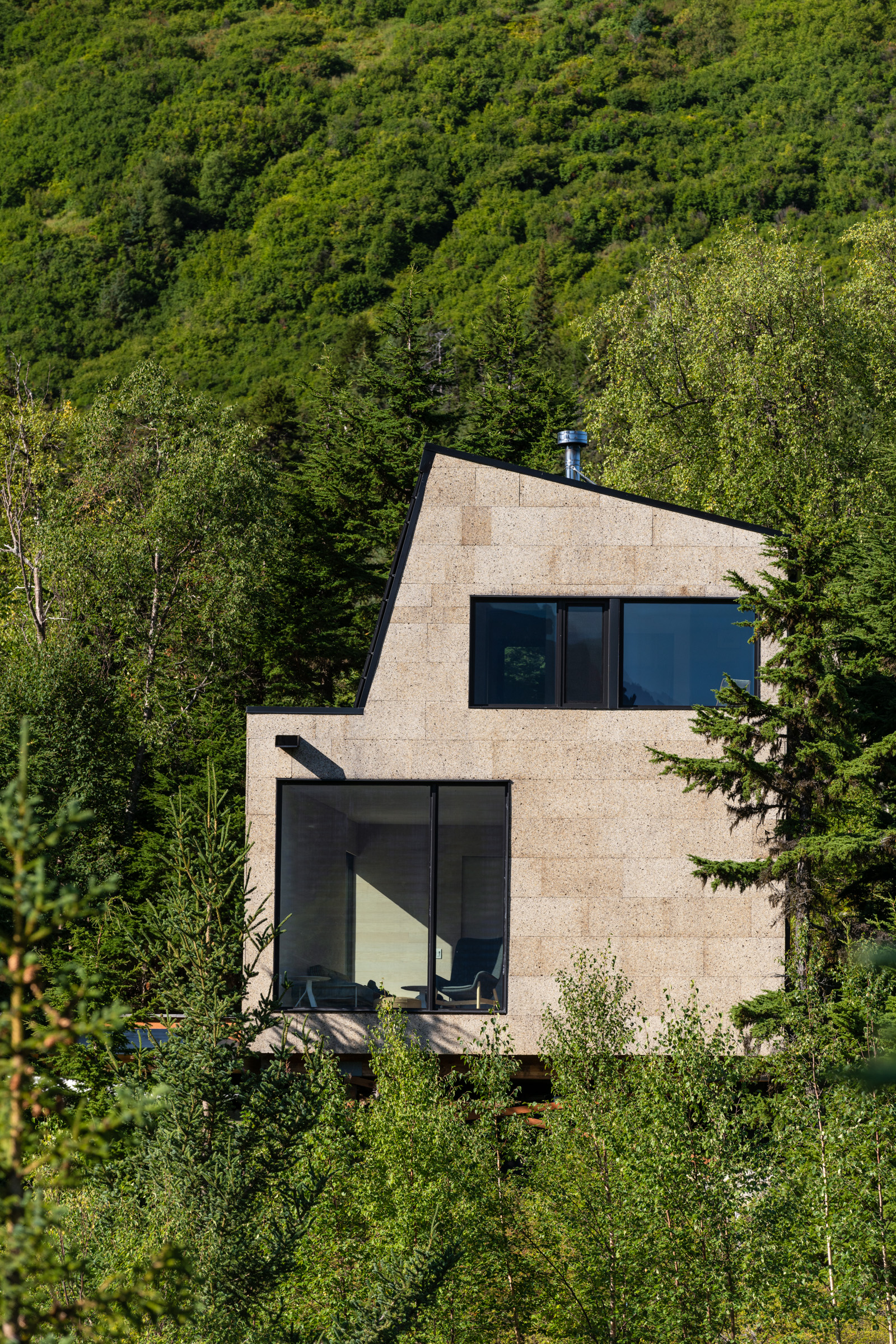
Cork Cabin
Location: Moose Pass, Alaska
Year: 2015-21
Awards:
2022 AIA Northwest & Pacific Merit Award
2021 AIA Alaska Honor Award
2015 AK Division of Economic Development Sustainability Award
Team: Petra Sattler-Smith
This off-grid cabin project is nestled into a hill at the base of the surrounding mountains. The materials and construction systems have been selected as the most sustainable, regionally appropriate, long-lasting options, resulting in a beautiful shelter within its natural environment. The 10-acre site enjoys expansive views and is a perfect setting to escape urban living and reconnect with nature.
A short driveway carries cars up to a small parking area; a small footpath directs visitors down to the deck with a sunken fire pit. The cabins on each side of the deck perfectly frame the vista between the two mountain peaks beyond the lake below. From here, visitors may enter either of the two cabins.
The smaller 250 sf cabin boasts a solid timber door, entering into a cozy Port Orford cedar-scented interior with a modest cooking/dining space and ample sleeping platforms. The interior finish is simply the visible portion of the structural dowel-laminated timber panels – an honest and revealing experience. With the help of friends these pre-fabricated panels were constructed locally by the owner.
Across the way, the larger 750 sf cabin provides longer-term living functionality with additional sleeping spaces on the second floor. From the covered entry a bathroom is accessible to users of both cabins. Rainwater is captured in a 1,100-gallon tank below the cabin. This allows visitors to enjoy a hot shower after a long hike. An array of solar panels is mounted to the tilted (and “pushed-back”) south façade on the second floor, minimizing the scale of this elevation.
The interior is cladded in white washed oak veneer plywood planks to match the oak hardwood floor resulting in a calm interior space.
To complete the experience the cabin exteriors are insulated and finished with natural cork. This material offers natural resistance to weathering and fire, is carbon negative and blends in well with the surrounding forest.












